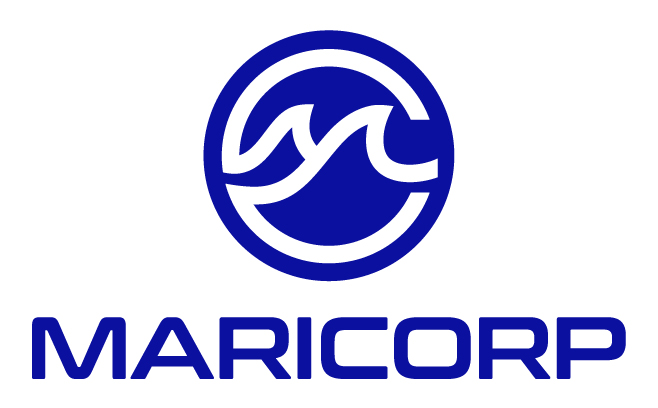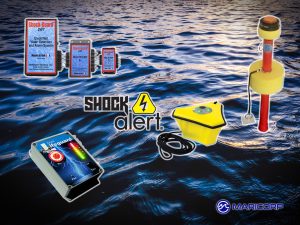Fuel Dock Winterization & Battery Care: Smart Steps That Prevent Headaches Later
Fuel dock winterization starts before it freezes
Fuel dock winterization is about stability, safety, and spill control when temperatures drop and traffic slows. Cold weather changes how fuel behaves, how fittings seal, and how people move on the dock. Hoses stiffen. Nozzles don’t seat the same way. Absorbents get damp and stop absorbing. Staff get bulky jackets and gloves that make fine control harder. You want to lock in clean fueling habits now, while you still have predictable staffing and daylight, instead of waiting for the first ice-up day in December.
Start with containment. Federal Spill Prevention, Control, and Countermeasure (SPCC) rules apply to marinas with above-ground petroleum storage above certain thresholds, and even small operators are strongly encouraged to keep a written spill plan, labeled shutoffs, and stocked cleanup gear at the fuel dock. The EPA guidance for marinas calls out absorbent booms, pads, gloves, and disposal bags as standard equipment, plus clear instructions on who calls whom if anything hits the water. Having that gear accessible and dry going into winter is part of fuel dock winterization, not an optional extra.
Then look at operations. Make sure your “no topping off” script is being used at the dock. Overfilling a tank in cold weather is more likely to push fuel out of the vent and into the water, and the marina will own that sheen. BoatUS and EPA aligned guidance also recommends keeping absorbent pads wrapped around the nozzle and near the vent while fueling, and stopping at about 95 percent instead of brimming the tank, to reduce the risk of an overflow. That same pad should be replaced when it’s saturated, not left there all winter as decoration.
Finally, walk the fueling area after sunset. Winter means shorter light and colder hands. Confirm that shutoff switches, emergency contact numbers, spill kit locations, and “engines off / no smoking / stay with your nozzle” signage are visible in night conditions, not just on a sunny afternoon. Document any dark spots and fix those first. A clean, well-lit fueling zone in cold weather is not only safer, it also looks competent to your slip holders and can help you defend procedures if you ever need to.
Shut down, drain, and protect lines the right way
The next piece of fuel dock winterization is mechanical: fuel lines, dispensers, filters, and water management. Cold swings create condensation in lines and tanks. Water collects, then freezes, then cracks fittings or blows a seal. That’s how you end up with a spring startup leak and an expensive cleanup.
Before sustained freezing nights, schedule a controlled shutdown of each hose and dispenser:
Bleed pressure from the hose and nozzle so nothing is trapped and able to expand.
Inspect each nozzle, breakaway fitting, and swivel for hairline cracking or stiffness. Swap anything suspect now.
Check the fuel-water separator and replace filters going into layup. Both state marina programs and boating safety groups recommend replacing or servicing fuel-water separators before winter so you are not starting spring with a waterlogged element.
Store hoses so they are supported and not kinked at a tight angle. A hard kink that sits all winter often becomes a split when you pressurize in spring.
Watch for trapped rainwater and bilge discharge around the fueling area. Agencies that oversee winterizing boats advise keeping bilges dry and using absorbent pads in machinery spaces so oily water is not pumped overboard. That discipline applies to your dock deck too. Standing oily water can freeze, turn into a slip hazard, and then thaw straight into the basin. Clean it, absorb it, and log it.
During shutdown, confirm emergency gear. Every shift should still know where the fire extinguisher is, how to hit the pump shutoff, and who is the spill lead if something goes wrong. Industry guidance recommends assigning a spill response leader per shift and rehearsing that plan regularly, even off-season.
Boat battery care for storage and spring reliability
Boat battery care is the second half of this story, because spring frustration usually isn’t “the fuel dock didn’t start up,” it’s “the boat won’t start.” A predictable pattern every spring is dead or frozen batteries, corroded terminals, and mystery drain from something that was left on over winter. Core boat battery care steps prevent that and save you from rush calls in March.
Before storage, fully charge each lead-acid starting or house battery. A fully charged battery is less likely to freeze in cold weather, and freezing damage can crack the case or ruin capacity. Industry guidance also notes that lead-acid batteries slowly self-discharge over winter, so topping them up before layup reduces sulfation and keeps cold from killing them.
After charging, disconnect the battery from loads. Even a tiny parasitic draw from electronics that “sleep” can pull a battery down over a few months. The recommended practice is either: (1) open the battery disconnect switch so the battery is isolated, or (2) physically remove the negative cable so nothing on board is still pulling power.
Now decide where it will live. The most conservative approach for boat battery care is to remove the battery from the boat and store it in a cool, dry, non-freezing space like a garage shelf, where you can get to it easily for maintenance charging. Many marine service guides suggest hooking stored batteries to a smart maintainer or topping them off monthly so they stay charged without overcharging. Lithium batteries behave differently: they’re often stored around 50 percent charge and checked every couple of months because they self-discharge more slowly. Before you call it done, clean and protect the hardware. Wipe terminals, remove corrosion, confirm electrolyte level if you’re still running flooded cells, and apply dielectric or silicone grease on clean posts to keep moisture out. That small step can prevent spring no-starts and saves you from last-minute Saturday morning battery swaps in April.
Boat battery care packages you can sell now
This is where fuel dock winterization and boat battery care become revenue instead of just risk management. Build a simple menu you can sell in November and December as prepaid service:
Battery Test and Report
You pull the batteries, clean the posts, check fluid levels on flooded cells, run a load test, and record voltage. You return a one-page report that says: pass, borderline, or replace before spring. This lines up with off-season guidance to inspect cases, cables, electrolyte, and state of charge before storage.
What you’re selling: certainty. The boater knows if the battery will crank in April.Clean, Charge, and Store
You fully charge the batteries, disconnect them from all loads, tag them with the owner’s name, and store them in a controlled indoor spot that will not freeze. You maintain them on a smart charger or float charger through winter so they never sit discharged and never freeze. Industry recommendations are clear: charged batteries can better tolerate cold, and a maintainer prevents overcharging while keeping them ready.
What you’re selling: convenience. They do not have to come back all winter to “check the batteries.”Spring Reinstall Priority
You reinstall and reconnect the batteries before splash. You clean connections again, apply terminal grease, confirm the battery switch is labeled correctly, and verify that key-on power works at the helm. You also flag any battery that failed over winter so the customer can approve a replacement before first launch weekend, not at the dock. This ties directly back to boat battery care and protects your schedule when everyone wants to launch on the same sunny Saturday.
Package these as flat-fee add-ons and put them on the same prepaid sheet as fuel dock winterization shutdown and inspection. The positioning is simple: “You will start on the first crank in spring, and you will not get the 7 a.m. ‘my boat is dead’ call.”
Winter fuel dock inspection checklist for staff
Make fuel dock winterization a daily habit, not a once-and-done task. Post a one-page checklist at the counter and log it at opening and again after dark. Focus on:
Spill control & shutoffs: spill kit stocked and dry (booms, pads, gloves, disposal bags); emergency shutoff labeled and tested per plan; NRC/EPA call tree posted. EPA’s SPCC rules require a written plan for facilities over the threshold and strongly encourage preventive gear and clear procedures at smaller sites.
Dispensers & hoses: pressure bled after last use; nozzles, breakaways, and swivels inspected; filters/water separators serviced before layup so you aren’t starting spring with water-logged elements.
Fueling practice cues: “Engines off / no smoking / stay with the nozzle / don’t top off” placards clean and visible; absorbent pad at the fill and near vents; crew trained to stop around ~90–95% to allow expansion.
Walking surfaces & lighting: clear of drips, cords, and ice; burned bulbs noted and fixed; temporary cones or signs where glaze forms. OSHA’s winter guidance: clear/treat slick surfaces and slow the walking pace.
Keep the day’s sheet with your SPCC binder (or winter safety folder) so you can show inspection + correction if questions ever arise.
What to tell customers (simple, confidence-building copy)
Use plain, directive language that explains how fuel dock winterization and boat battery care protect the water and their wallet:
Fueling: “We don’t top off in winter—fuel expands and vents can burp into the water. We keep absorbent pads at the fill and vent, and we ask you to stay with the nozzle.” (This mirrors national clean-fueling guidance.)
Spill readiness: “Spill gear is staged at the dock and our shutoff is labeled. If you see a sheen, call the office immediately.” (SPCC programs emphasize staged gear and clear roles.)
Walking safety: “Decks can glaze after dark—use handrails and move slower.” (Matches OSHA winter slip guidance.)
Boat battery care: “Charge before storage, disconnect loads, and either store batteries where it won’t freeze or enroll in our ‘Clean, Charge, and Store’ service with monthly maintenance charging.” (Aligns with current off-season battery recommendations.)
Place this copy on a half-sheet at the counter and paste the same text on your website’s winter page. It keeps your crew on-message and shows customers you’re following recognized best practices.
Spring-readiness handoff and recordkeeping
Fuel dock winterization only pays off if you can reopen fast in spring. Keep a simple binder or shared folder with four things: the shutdown checklist with dates, a parts list you replaced (nozzles, breakaways, filters), a lighting and signage punch list, and a list of boats enrolled in boat battery care. Tag each dispenser and hose with a small zip tie or label noting the last filter change and inspection date. Photograph the fuel dock, spill gear station, and each dispenser after shutdown so you can compare condition at spring start.
Order long lead items now. Breakaways, swivels, filter elements, absorbent booms, and fresh signage tend to run short in March. If you know a hose is near the end of life, stage the replacement and set a calendar reminder to install it during your spring pressure test. For battery customers, store a one-page card with owner name, battery type and count, test result, storage location, and the date of the last maintenance charge. That card becomes your reinstall ticket in spring and prevents scramble.
Wrap and next steps
Close the loop with a brief team huddle. Confirm the daily winter fuel dock inspection is posted at the counter and the ice watch note is part of opening and after-dark routines. Walk the fuel dock after sunset once more to spot any gaps in lighting or signage. Publish a short customer note on your site that explains the winter fueling rules and the boat battery care services you offer, then place the same text on a half sheet at the counter.
Set three calendar reminders: midwinter supply check, late-winter training refresh, and early March spring reactivation planning. Attach your photos, checklists, and service menus so next year’s team starts with a ready kit. The aim is simple: clean shutdown now, quiet winter, and a smooth first-crank season opener.
*Sign up for our free newsletter “Marina Management Journal” so you can stay up to date
About MariCorp
Maricorp is one of the largest floating boat dock manufacturing and construction companies in the United States, specializing in galvanized steel floating docks and boat lift systems. With projects spanning coast-to-coast, Maricorp provides marina consultation and design, marine construction, marina repair and renovation, and boat dock disaster response and demolition.














